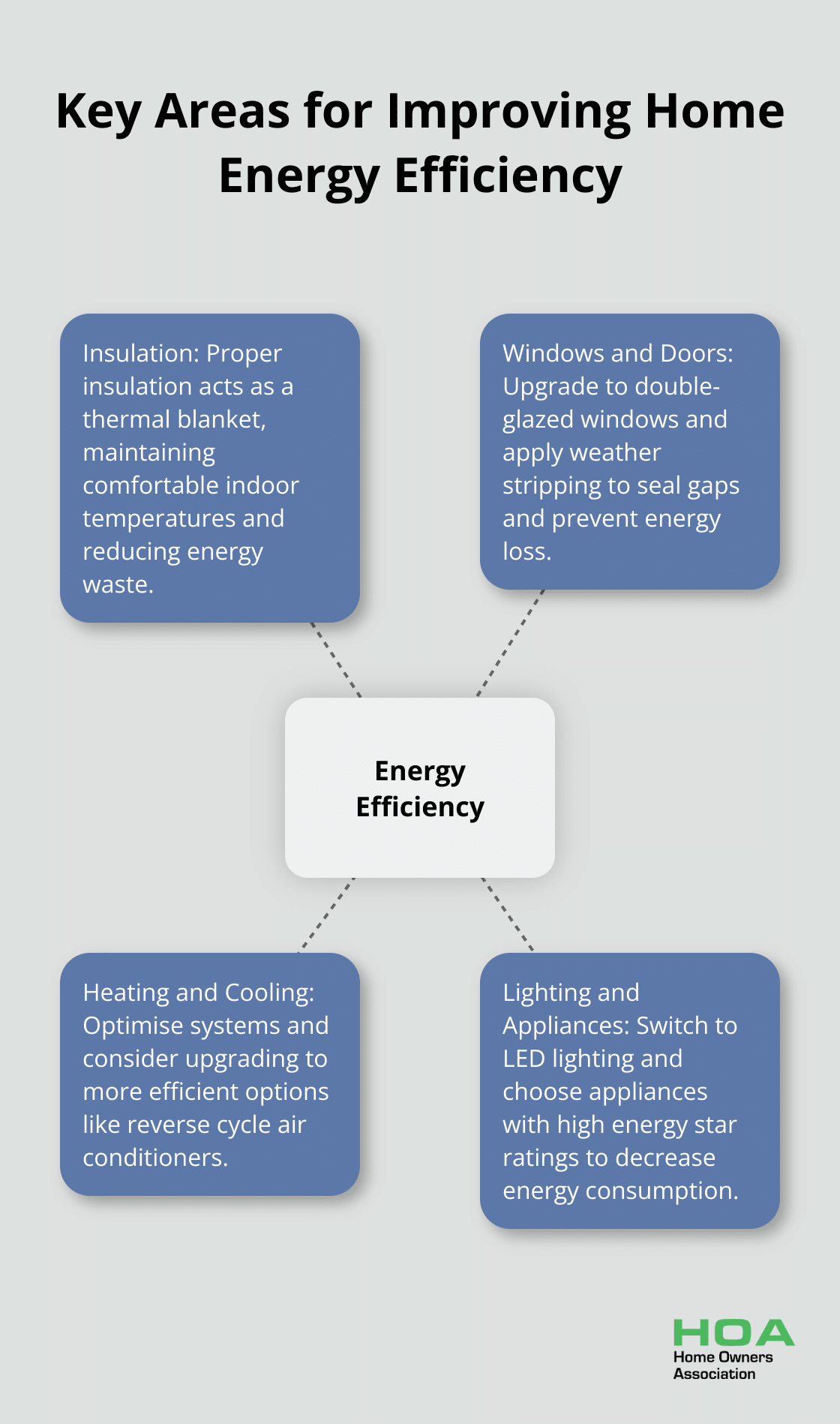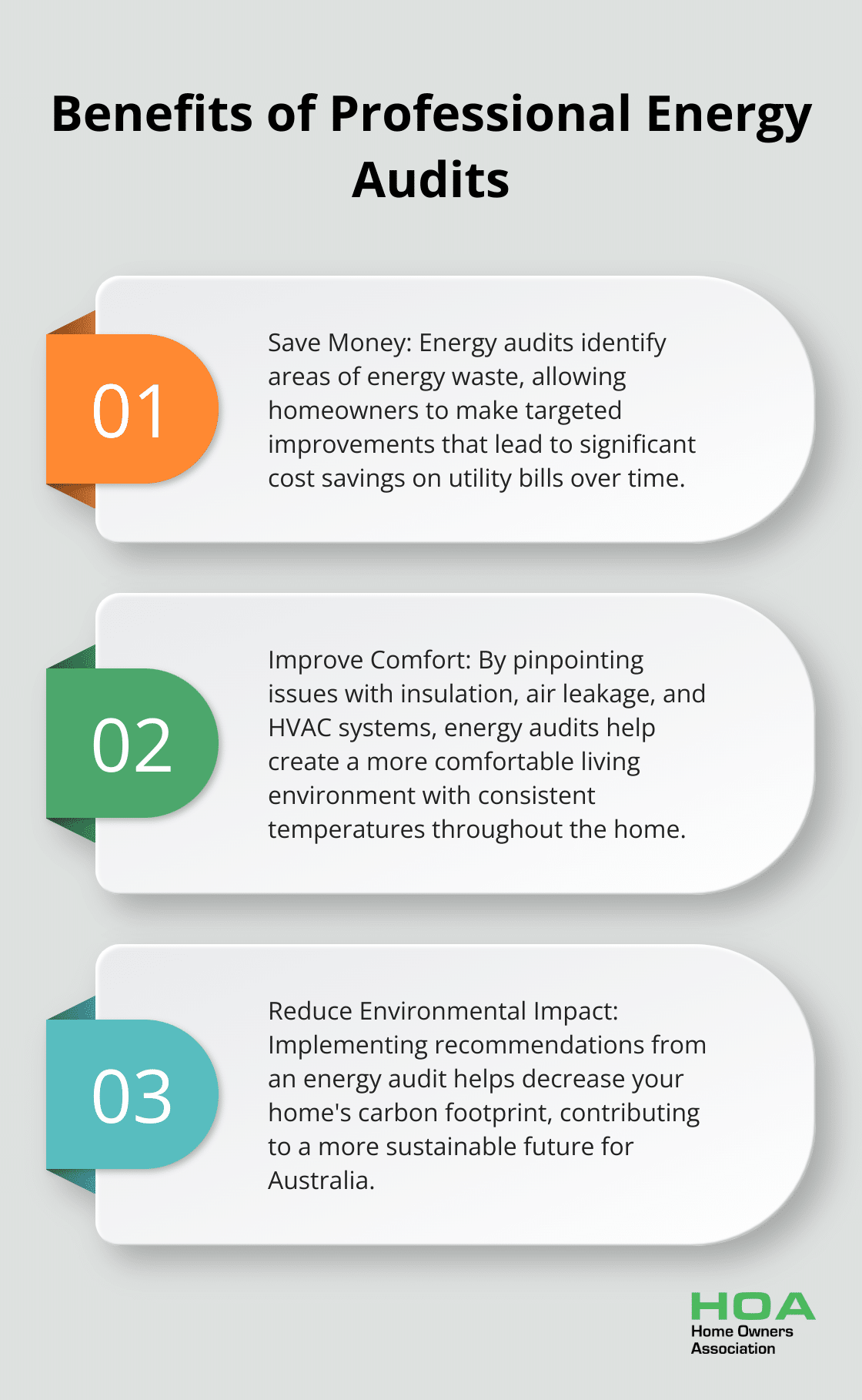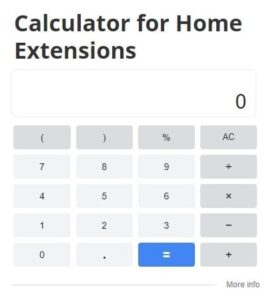
At Home Owners Association, we understand the importance of energy efficiency in modern homes. An energy rating for your home is more than just a number; it’s a reflection of your property’s overall performance and potential savings.
Improving your home’s energy rating can lead to reduced utility bills, increased comfort, and a smaller carbon footprint. In this guide, we’ll explore practical steps to boost your home’s energy efficiency and achieve a higher rating.
What’s a Home Energy Rating?
The Basics of Energy Ratings
A home energy rating provides a standardised measure of a property’s energy efficiency. This score indicates how well a home performs in terms of energy consumption. In Australia, the Nationwide House Energy Rating Scheme (NatHERS) uses a star system that ranges from 0 to 10 stars. A higher star rating means the home is more comfortable to live in and is cheaper to run.
The Importance of Higher Ratings
Improving your home’s energy rating offers tangible benefits beyond mere bragging rights. Homes with higher energy ratings typically enjoy lower energy bills. A study by the University of Melbourne revealed that properties with higher star ratings can command up to 9.4% more in the real estate market for a 7-star rated home (compared to a 3-star reference level). Furthermore, these homes often provide a more comfortable living environment, with improved temperature regulation and air quality.

How Ratings Are Calculated
Energy ratings result from sophisticated software analysis that considers various factors. These include:
- Home layout
- Construction materials
- Insulation quality
- Window type and orientation
- Local climate conditions
Accredited assessors input this data to generate the final rating. For existing homes, the process often begins with an energy audit. This comprehensive assessment identifies areas of energy waste and provides a roadmap for improvements.
Benefits of Energy Ratings
Understanding your home’s energy rating empowers you to make informed decisions about energy-efficient upgrades. The benefits of a higher energy rating include:
- Reduced utility bills
- Increased property value
- Enhanced comfort levels
- Smaller carbon footprint
Next Steps in Energy Efficiency
Now that you understand what a home energy rating is and why it matters, it’s time to explore the key areas where you can improve your home’s energy efficiency. From insulation upgrades to optimising heating and cooling systems, there are numerous ways to boost your home’s performance and achieve a higher rating.
How to Boost Your Home’s Energy Efficiency
Improving your home’s energy efficiency is a smart investment that pays off in multiple ways. Strategic upgrades can dramatically reduce energy consumption and costs for homeowners across Australia. Let’s explore the key areas where you can make impactful changes.

Insulation: Your Home’s Thermal Blanket
Proper insulation maintains a comfortable indoor temperature and reduces energy waste. Depending on the climate zone, heating and cooling can account for 20% to 50% of energy used in Australian homes. Focus on insulating your ceiling, walls, and floors. For older homes, consider retrofitting with blow-in insulation or batts. A well-insulated home requires less energy for heating and cooling, which directly improves your energy rating.
Windows and Doors: Sealing the Gaps
Windows and doors often cause energy loss. Upgrade to double-glazed windows to prevent heat loss compared to standard windows. For a cost-effective solution, apply weather stripping around doors and windows to seal gaps. These measures can help reduce your energy bills.
Heating and Cooling: Smart Temperature Control
Optimising your heating and cooling systems is essential for energy efficiency. Set your cooling systems and heating systems for optimal efficiency. Consider upgrading to a reverse cycle air conditioner, which can be more efficient than traditional electric heaters (an improvement for your home’s energy performance).
Lighting and Appliances: Small Changes, Big Impact
Switch to LED lighting to decrease energy consumption compared to halogen globes. When it comes to appliances, look for models with high energy star ratings. The Equipment Energy Efficiency (E3) Program reports that selecting appliances with higher star ratings can lead to substantial savings over time. Don’t overlook standby power – turning off unused entertainment systems can save on energy costs.
Next Steps: Implementing Changes Effectively
Now that you understand the key areas for improvement, it’s time to learn how to implement these changes effectively. The next section will provide a practical guide to boosting your home’s energy rating, including tips on conducting energy audits and prioritising cost-effective upgrades.
How to Boost Your Home’s Energy Rating
Conduct a Professional Energy Audit
The first step to improve your home’s energy rating is to conduct a professional energy audit. This comprehensive assessment will identify areas where your home loses energy and provide a roadmap for improvements. Energy audits are smart because they help save money, find hidden problems, improve workplace comfort, and reduce environmental impact.

During the audit, an expert will examine your home’s insulation, air leakage, heating and cooling systems, and appliances. They’ll use specialised tools like thermal imaging cameras to detect heat loss and blower door tests to measure air tightness. This detailed analysis will help you understand where to focus your efforts for maximum impact.
Prioritise Cost-Effective Upgrades
After you receive your audit results, prioritise improvements. Focus on upgrades that offer the best return on investment. Sealing air leaks and adding insulation are often low-cost yet highly effective measures.
Next, consider upgrading to energy-efficient appliances. The Energy Rating Label system helps you understand the energy use and running costs of common household appliances. You can also compare the energy rating of different models. Appliances with higher star ratings can lead to significant long-term savings.
Choose Between DIY and Professional Upgrades
Some energy-efficient upgrades are suitable for DIY enthusiasts, while others require professional expertise. You can replace weatherstripping, install LED globes, or add insulation to accessible areas yourself. However, for more complex projects like upgrading your HVAC system or installing double-glazed windows, hire certified professionals.
Members who combine DIY efforts with professional services often achieve the best results. A network of trusted contractors can help you tackle more challenging upgrades while ensuring compliance with Australian building codes and energy efficiency standards.
Take Advantage of Government Incentives
The Australian government offers various incentives to encourage homeowners to improve their energy efficiency. These include rebates for solar panel installation, energy-efficient appliance upgrades, and home insulation improvements. The availability and amount of these incentives can vary by state and territory.
For example, the Small-scale Renewable Energy Scheme provides financial incentives for installing eligible solar panel, wind turbine, and hydro systems. In Victoria, the Solar Homes Program offers rebates and interest-free loans for solar panel installations and hot water systems.
Check with your local government or energy authority for the most up-to-date information on available incentives. These programmes can significantly offset the cost of energy-efficient upgrades, making it more affordable to boost your home’s energy rating.
Final Thoughts
Improving your home’s energy rating will lead to significant benefits in comfort, cost savings, and environmental impact. You can boost your home’s energy performance through targeted improvements in insulation, windows, heating systems, and efficient appliances. A professional energy audit provides a clear roadmap for these enhancements, helping you prioritise the most effective upgrades.
The advantages of an energy-efficient home extend beyond reduced utility bills. You will experience increased property value, enhanced comfort, and a smaller carbon footprint (which is great for the environment). Government incentives can make these upgrades more affordable, allowing you to see a faster return on your investment.
At Home Owners Association, we support Melbourne homeowners in their journey towards energy efficiency. Our members receive expert advice and access to trade pricing for their home improvement projects. You invest in a more sustainable future for Melbourne when you prioritise your home’s energy rating.





